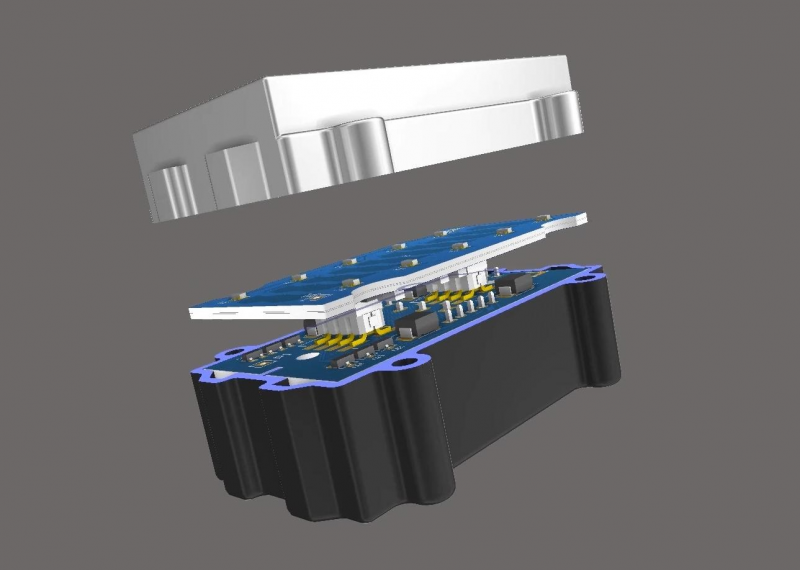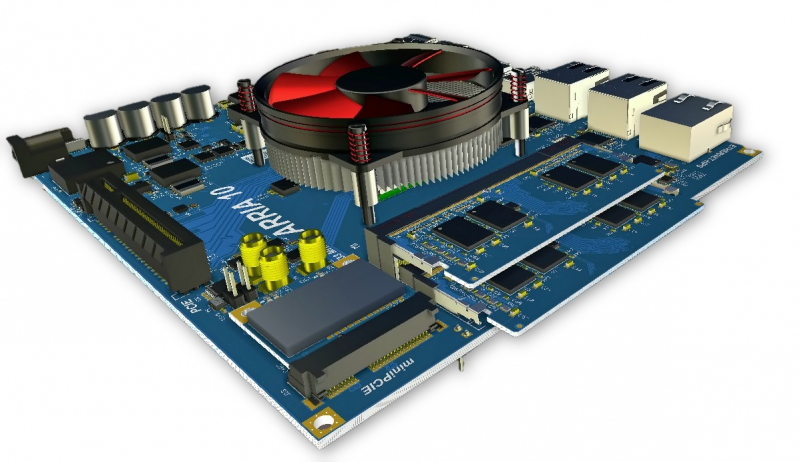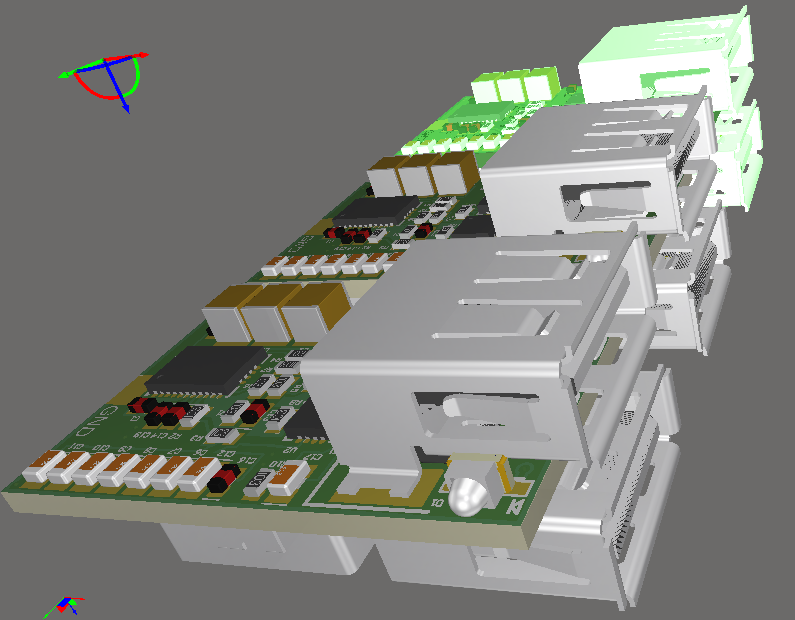How to Use ECAD/MCAD Co-design for Your PCB Enclosure and Board Layout

Printed circuit boards are fun to design and lay out, but a PCB will need an enclosure to hold it mechanically stable. PCB enclosures can be purchased off-the-shelf or they can be custom-designed in MCAD tools. No matter which route you take to create your enclosure, you’ll need to import your PCB layout into MCAD tools to ensure your board and components will not interfere with the enclosure.
When you’re working with a complex layout, multiboard system, or flexible PCB, you’ll need to quickly access MCAD tools to inspect interference between your PCB enclosure, your electronic components, and your board. Altium Designer contains the MCAD tools you need to check mechanical interference as you design your circuit board and your enclosure, and it includes the most powerful set of circuit board design features. Designers can create complex boards for any application alongside their enclosures.
ALTIUM DESIGNER
The only PCB design package that integrates ECAD and MCAD features into a single program for PCB layout, routing, and enclosure design.
Since every PCB needs an enclosure, it’s important to check that a PCB assembly will fit into the enclosure without interference. In addition, designers need to check that their components will not interfere with each other when placed in the PCB layout. In some cases, you may want to design an enclosure to fit a finished PCB layout, or you may need to design a PCB layout to fit into a custom enclosure.
In either case, your PCB design tools should include a range of MCAD features to help you design and inspect your PCB enclosure and verify that it will fit your circuit board. Instead of continuously moving back and forth between multiple programs to do this type of interference checking manually, your design tools should include a range of features that automatically check your layout features against your enclosure model, and vice versa. Here’s how you can implement this type of interference checking in the best PCB design and layout software with integrated and external MCAD features.
How to Design a PCB Enclosure and a Layout to Prevent Interference
When you need to design an enclosure around your PCB layout and prevent interference between components, you have a few options to help ensure accuracy in your design:
- Export your PCB layout as a STEP file and import it into an MCAD application for enclosure design
- Export your enclosure as a STEP file and import it into your PCB design application
Altium Designer supports both processes as part of PCB layout and enclosure design. However, when you need to prevent interference, you can import a STEP file into your PCB project and check for interference manually or automatically. The design tools in Altium Designer go a step further and help you quickly check for interference between board sections, components, enclosures, and other mechanical models.
Integrated MCAD Tools Aid ECAD Layout and
Altium Designer includes MCAD tools that allow you to create your PCB layout in 3D. In addition, DRCs can be run in 3D mode to check electrical design rules and mechanical clearances. Once a STEP model for an enclosure is imported into Altium Designer, it can be visualized alongside the PCB layout to ensure fit to the enclosure and check for interference.
- STEP files are a primary file format used to move data between mechanical design programs. You can use STEP files in Altium Designer to work with your enclosure alongside your PCB layout.
- Altium Designer provides instant linking to popular MCAD applications for enclosure design and mechanical modeling.
Learn more about ECAD/MCAD integration in your PCB design software.
- If you’ve never used ECAD software with integrated MCAD features, Altium Designer provides the resources you need to get started and create ultra-accurate designs.
Learn more using Altium Designer’s integrated MCAD co-design features.

Enclosure clearances and interference can be checked in 3D using Altium Designer’s integrated MCAD toolset.
Enclosures for Flex, Rigid-flex, and Multiboard Designs
Not all boards are designed on rigid substrates. Some rigid boards are part of multiboard systems or rigid-flex PCBs, and both types of circuit board designs require accurate mechanical modeling to prevent interference. In addition, fully flex or rigid-flex boards need accurate modeling to ensure the board can bend or fold in the correct way and without collisions between circuit boards, components, or an enclosure.
Working with Complex 3D PCB Layouts in Altium Designer
The MCAD design features and mechanical clearance checking tools in Altium Designer also extend to flex, rigid-flex, and multiboard designs. Any design you can imagine can be created in 2D, examined in 3D, and exported for use in an external MCAD application for PCB enclosure design. Finally, when you’ve created your enclosure for these advanced boards, you can import the enclosure back into Altium Designer for interference checking and manufacturing preparation.
- Once you import your enclosure and PCB layout into Altium Designer’s MCAD tools, it’s easy to check mechanical and electrical design rules.
Learn more about interference checking during mechanical design.
- Flex and rigid-flex boards also need structural modeling to ensure polyimide ribbons remain static or dynamic during operation.
Learn more about design and mechanical modeling for flex PCBs.
- Altium Designer’s MCAD tools and project management features make multi-board design and assembly easy. You can arrange, model, and layout multi-board systems while preventing interference with your enclosure, components, and between boards.
Learn more about multi-board systems design in Altium Designer.

Altium Designer’s MCAD features help you design complex multiboard systems and an enclosure.
Accurate Mechanical Modeling Requires Instant Interference Checks
Other CAD tools might allow you to export your board for use in an external MCAD program, or they might allow you to import an enclosure model into your PCB layout. However, MCAD applications can’t check for mechanical interference, clearance rules, and electrical rules simultaneously. Similarly, most PCB design applications make interference and clearance checking difficult because they only focus on electrical design. Thanks to Altium Designer’s ECAD/MCAD integration, both sets of rules and constraints can be checked in a single application.
Use Rules-Driven ECAD/MCAD Co-design in Altium Designer
Altium Designer’s comprehensive toolset is integrated into a single program with a comprehensive rules-driven design engine. Designers will have access to a complete set of design and verification tools that operate in 2D and 3D, which includes electrical and mechanical rules checks. Rules-driven design tools are critical for ensuring all aspects of your board meet your intended design and functionality requirements.
- Only Altium Designer gives you access to the most powerful set of PCB design tools, including MCAD co-design features, in a single environment. You’ll have everything you need for circuit board layout alongside mechanical design features.
- Altium Designer’s MCAD connector extensions let you instantly import your PCB into popular MCAD applications and start designing your enclosure. You can import and model multiboard systems, flex, and rigid-flex boards.
Learn more about the MCAD connector extensions for Altium Designer.
- No matter what type of board you want to create, you can share your circuit board design files, enclosure design data, and manufacturing documents with collaborators using the Altium 365 platform.
Learn more about sharing your PCB design data on Altium 365.

Altium Designer interfaces with Solidworks, PTC Creo, and Autodesk Inventor for multiboard systems design and PCB enclosure design.
Altium Designer is the only PCB design platform that provides a complete set of ECAD and MCAD features for any electronics application. Whether you’re designing simple PCBs or complex multiboard systems, Altium Designer has the electrical and mechanical design features you need to create cutting-edge technology.
Altium Designer on Altium 365 delivers unprecedented integration to the electronics industry until now relegated to the world of software development, allowing designers to work from home and reach unprecedented levels of efficiency.
We have only scratched the surface of what is possible to do with Altium Designer on Altium 365. You can check the product page for a more in-depth feature description or one of the On-Demand Webinars.

















